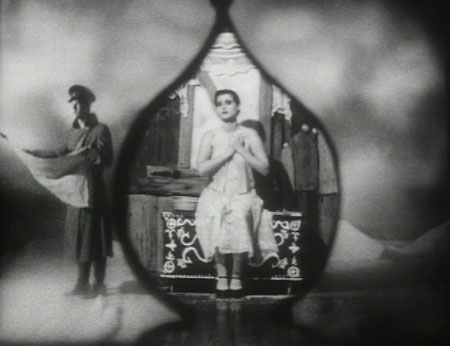366 Weird Movies may earn commissions from purchases made through product links.
“I wanted the film to be about the fatal attachment of Russians to their national roots, an attachment which they will carry with them for their entire lives, regardless of where destiny may fling them. How could I have imagined as I was making Nostalghia that the stifling sense of longing that fills the screen space of that film was to become my lot for the rest of my life; that from now until the end of my days I would bear the painful malady within myself?” –Andrei Tarkovsky, Sculpting in Time

DIRECTED BY: Andrei Tarkovsky
FEATURING: Oleg Yankovskiy, Domiziana Giordano, Erland Josephson
PLOT: Andrei is a Russian poet is traveling around Italy in the company of a fetching translator, researching a biography of a Russian composer who studied in Italy before returning to Russia only to drink and kill himself. Andrei becomes homesick and bored with the project, and with life in general, until he becomes fascinated by a insane man living in a small town famous for its natural mineral baths. The madman gives him a simple symbolic task to perform—which Andrei procrastinates in completing— then leaves for Rome on a mission of his own.

BACKGROUND:
- Tarkovsky was considered one of the finest filmmakers in the Soviet Union; he frequently ran into difficulty with the Soviet censors, however, particularly for his Christian viewpoints. Although his films won acclaim at international film festivals, they were often shown to limited audiences in edited versions in his own country. Work on the historical epic Tarkovsky was helming prior to Nostalghia had been halted by the Soviet censorship board because of scenes seen as critical of the state’s policy of official atheism.
- Nostalghia was the first film Tarkovsky made outside the Soviet Union. Originally intended to be a Soviet/Italian co-production, the state-owned USSR film production Mosfilm withdrew financial support for the project without comment after filming had already begun.
- The film competed for the Palme d’Or at Cannes, but was awarded a special jury prize instead. Tarkovsky claimed that the Soviet contingent applied pressure to assure that the film would not be awarded the grand prize.
- Tarkovsky defected to the West soon after Nostalghia was completed, leaving his wife and son behind. They were eventually allowed to leave the country when he was diagnosed with lung cancer in 1986. Rumors persist that Tarkovsky did not die of natural causes, but was actually poisoned by the KGB in retaliation for his defection.
INDELIBLE IMAGE: There are many fine candidates. The scene of Andrei attempting to carry a lit candle cupped in his hand across a drained spa may stick with the viewer, if not for its symbolism, then because it audaciously continues for over eight minutes. But the final, static, picture postcard-like composition of a Russian homestead nestled inside an Italian cathedral perhaps captures Tarkovsky’s theme the best, and is shockingly beautiful, as well.
WHAT MAKES IT WEIRD: The fluidity between the conscious and subconscious worlds. Although it’s almost always clear whether the events depicted actually occur or are imagined, Tarkovsky is much more interested in what is going on inside the heads of his alienated Russian poet and the Italian madman than in what is happening in the “real” world. He uses strong, sometimes obscure visual symbolism and dreams to convey an affecting mood of existential loneliness.
Trailer for Nostalghia
COMMENTS: Nostalghia can’t be approached without a word of warning: this movie is Continue reading 25. NOSTALGHIA (1983)


